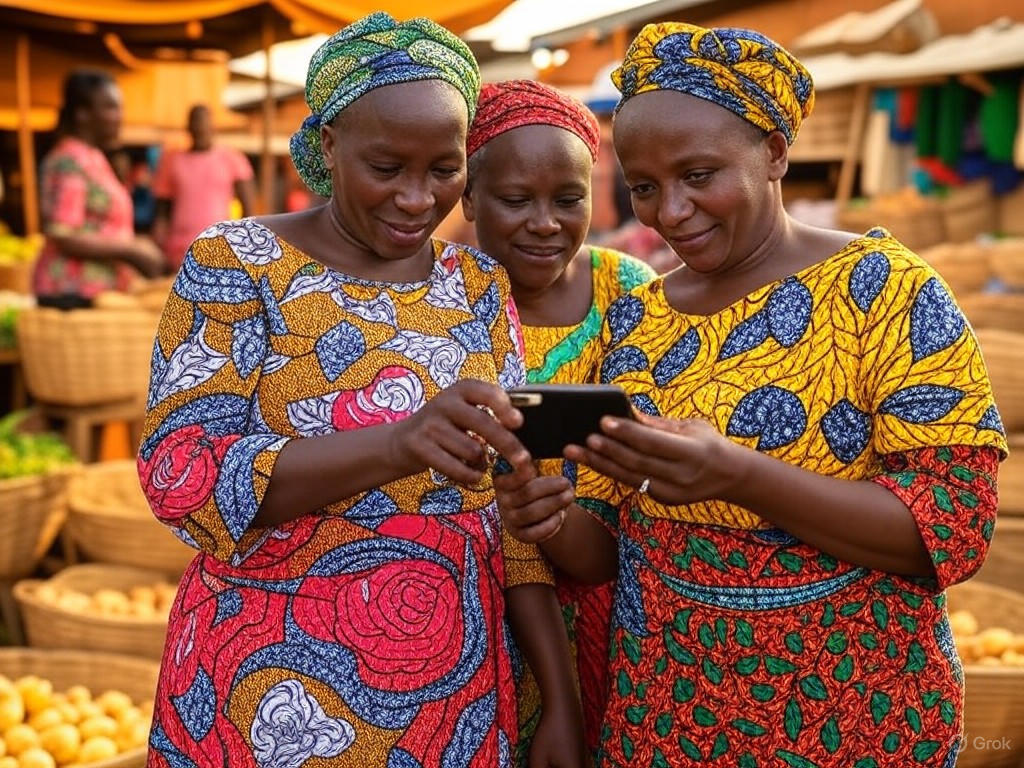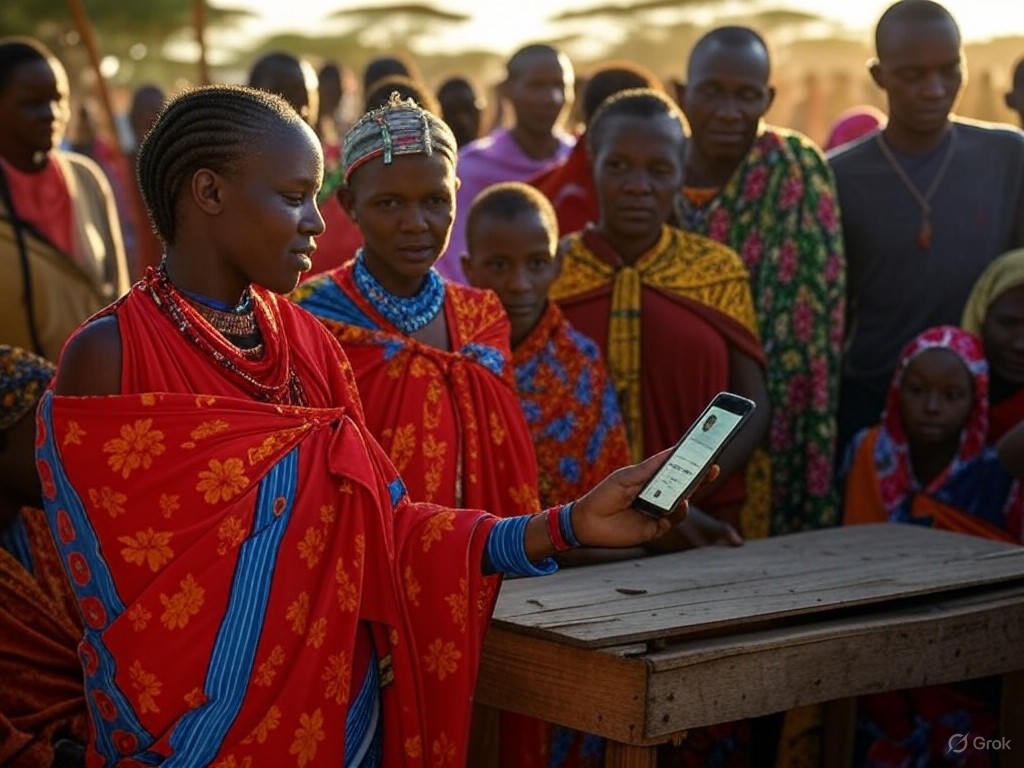Crowdfunding in Kenya: Grassroots Innovation
Introduction: A Beacon of Self-Reliance in Africa's Heart
In the sun-baked villages and bustling markets of Kenya, a quiet revolution is unfolding, one that echoes the enduring spirit of individual initiative and free-market ingenuity. Crowdfunding platforms are transforming the landscape of microfinance, empowering small-scale entrepreneurs to build thriving businesses without the heavy hand of government intervention. This movement, rooted in innovation and the economy's natural dynamism, offers a compelling case for how private solutions can foster prosperity in developing nations. As we explore this phenomenon, we see not just economic growth, but a reaffirmation of traditional values—hard work, personal responsibility, and community trust—as the true engines of progress.
Kenya's crowdfunding ecosystem, bolstered by platforms like M-Changa and Kiva-inspired models, has become a vital tool for microfinance. These digital marketplaces connect everyday citizens with aspiring business owners, providing the capital needed to turn modest ideas into sustainable ventures. Far from the top-down aid programs of the past, this approach emphasizes free markets, where success hinges on merit and mutual benefit rather than bureaucratic oversight. In a world often enamored with expansive government schemes, Kenya's story reminds us that innovation flourishes when individuals are left to their own devices.

This image captures the daily hustle of Kenyan entrepreneurs as they navigate crowdfunding apps, symbolizing the blend of technology and traditional market savvy that drives economic empowerment.
The Mechanics of Crowdfunding: A Free-Market Innovation
At its core, crowdfunding in Kenya represents a practical evolution of microfinance, blending ancient traditions of communal lending with modern digital tools. Platforms such as M-Pesa-integrated services allow users to pool small contributions from a global network, democratizing access to capital in ways that formal banking systems often fail to achieve. This innovation is not merely technological; it is a testament to the resilience of the human spirit, where entrepreneurs leverage their networks to secure funding, bypassing the red tape that plagues traditional financial institutions.
Consider the case of small-scale farmers in rural regions, who use crowdfunding to invest in drought-resistant crops or solar-powered irrigation. By 2022, Kenya's crowdfunding sector had facilitated over $100 million in loans, according to data from local fintech reports, enabling thousands to escape the cycle of subsistence living World Bank Financial Inclusion Report. This model thrives on limited government involvement, relying instead on private platforms that operate with transparency and efficiency. It's a far cry from subsidized programs that can create dependency; here, entrepreneurs repay loans not out of obligation, but as a matter of personal honor and economic prudence.
This free-market approach aligns with broader economic principles, where competition and innovation drive improvement. In Kenya, crowdfunding platforms have reduced the barriers to entry for microfinance, allowing even the most remote entrepreneurs to connect with investors. As The Wall Street Journal highlighted in a 2023 analysis, these platforms have lowered interest rates on microloans by fostering direct peer-to-peer interactions, a direct benefit of decentralized systems over state-controlled alternatives.
Evidence of Impact: Stories and Data from the Ground
The real power of crowdfunding lies in its tangible results, as evidenced by a growing body of research and real-world examples. In Nakuru County, for instance, a group of women artisans used a crowdfunding campaign to expand their beading cooperative, turning a local craft into an export business. This success story is not isolated; a 2021 study by the African Development Bank showed that microfinance through digital platforms has increased household incomes by an average of 20% in participating communities African Development Bank Microfinance Insights. Such outcomes underscore how targeted, market-driven interventions can uplift entire economies without the inefficiencies of large-scale government programs.
Innovation is at the heart of this transformation. Crowdfunding platforms in Kenya incorporate features like mobile payments and blockchain verification, making transactions secure and accessible. A report from the International Finance Corporation notes that these advancements have led to a 15% rise in entrepreneurial activity since 2019, particularly among youth and women International Finance Corporation Digital Finance Report. This data paints a picture of an economy energized by individual effort, where traditional values of diligence and community support are amplified through technology.
Yet, balance demands acknowledgment of challenges. Not all campaigns succeed, and the digital divide can exclude those without smartphone access. Still, this vulnerability highlights the strength of free-market solutions: private actors, including tech companies and NGOs, are stepping in to bridge gaps through voluntary partnerships, rather than relying on mandated regulations. As a 2022 analysis from the Brookings Institution emphasized, such organic growth fosters resilience, proving that economies thrive when innovation is left to flourish unchecked.

This graph illustrates the exponential rise in crowdfunding loans, reflecting how market-driven microfinance is fueling Kenya's economy and empowering local entrepreneurs.
Broader Implications: A Model for Global Prosperity
As we reflect on Kenya's crowdfunding success, it becomes clear that this model offers a blueprint for other nations grappling with economic stagnation. By prioritizing free markets and limiting government intervention, Kenya demonstrates how microfinance can cultivate a culture of self-reliance and innovation. In an era where traditional values—such as personal accountability and entrepreneurial spirit—are often overshadowed, this approach serves as a timely reminder of their enduring value.
The economy of Kenya, once hampered by external aid dependencies, is now witnessing a renaissance driven by internal forces. Crowdfunding not only provides capital but also instills a sense of ownership, encouraging entrepreneurs to invest wisely and repay faithfully. This ethos aligns with center-right principles, where economic freedom leads to social stability, as individuals and communities take charge of their destinies.
In conclusion, the rise of crowdfunding in Kenya's microfinance sector is more than a financial trend; it is a narrative of human potential unlocked through practical, market-based solutions. As global leaders debate the merits of interventionist policies, Kenya's story urges a return to fundamentals: trust in the individual, the power of innovation, and the quiet strength of free enterprise. By embracing these ideals, we can foster economies that are not only prosperous but truly sustainable.

